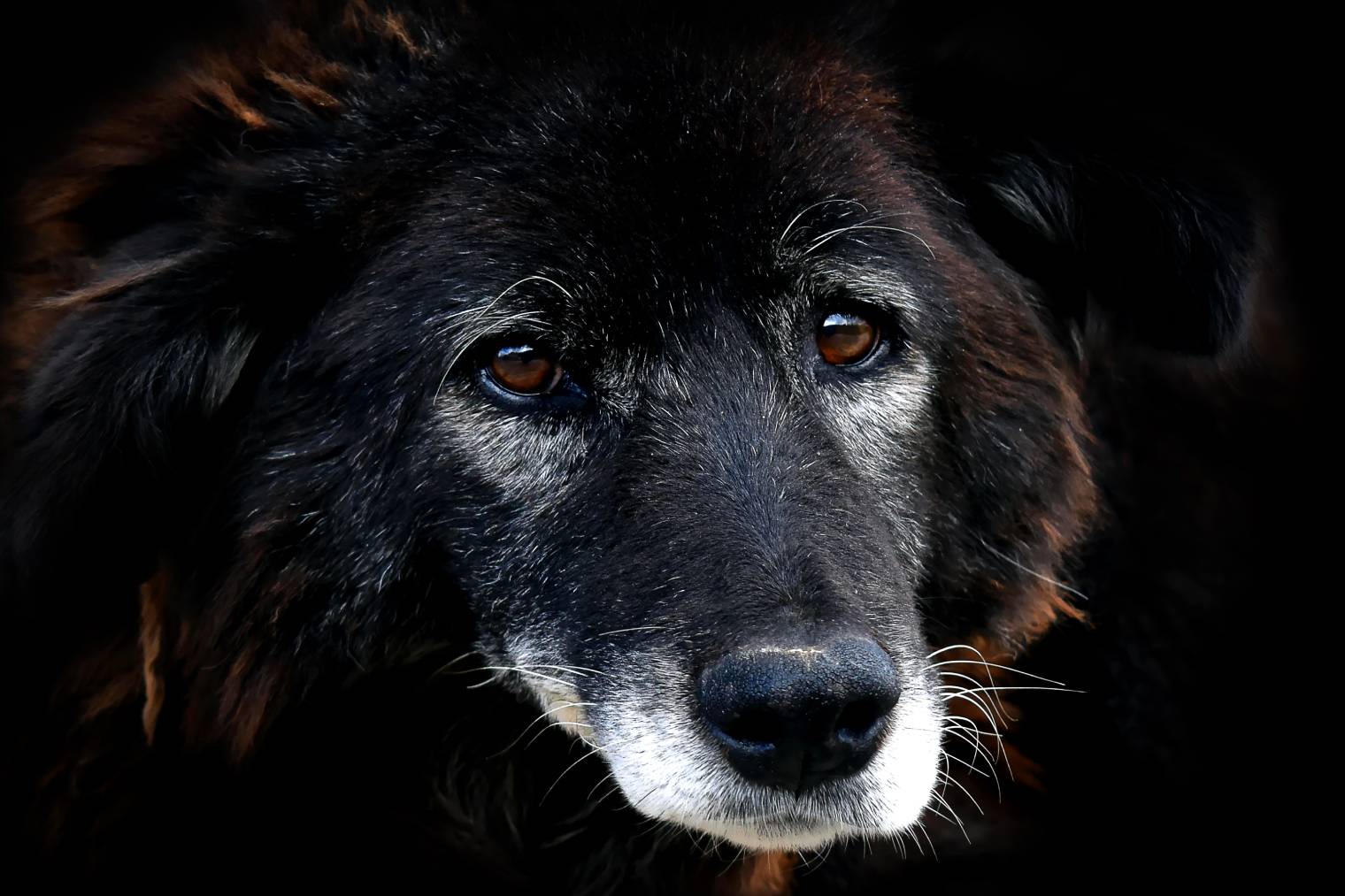Many mammals have whiskers, but have you ever wondered what purpose they serve? Whiskers help dogs to navigate the world by transmitting sensory information from the environment.
In this article, we’ll break down the purpose of dog whiskers and why canines evolved to have them.

What Are Whiskers?
Whiskers are hairs that come from a follicle, just like any other type of hair. However, you’ll notice that whiskers are longer and thicker than a dog’s fur or human hair. Whiskers are also located in strategic areas above the eyes, on the chin, and on the lips. Though the pattern and location may vary by breed, all dogs have whiskers from birth through their senior years.
Another way whiskers differ from other hairs is that they are more sensitive. The follicles are packed with nerve endings and blood vessels, making them as sensitive as human fingers. And like human fingertips, dogs experience touch through their whiskers.

Why Do Dogs Have Whiskers?
Whiskers may enhance the expressions of certain dogs, but that’s not their primary purpose. Whiskers are sensory additions for dogs that help them navigate the world. These hairs help with vision and other sensory inputs, similar to the antennae of insects.
Though whiskers have no sensory perception themselves, they transmit sensory information like air currents or the size and speed of nearby objects.

Whiskers Are “Dog Radar”
Dogs may be known for excellent senses of smell and hearing, but most dogs don’t have great vision. Dogs have unique eyesight that can’t be measured using standard methods, but research indicates that they see things more clearly when they’re at a distance. Whiskers help them see close objects by sending additional information to the brain. When a dog approaches something, the air currents hit objects and bounce back, delivering vibrations to the whiskers – much like a radar.
For wild dogs, whiskers are necessary for identifying the rest of the pack, finding prey, or alerting them to enemies. In a domestic environment, dogs can find their toys or food, even in low light.

Whiskers Communicate Emotions
When dogs are at rest, the whiskers are in “standby mode.” Once the dog is alert, the whiskers are ready to receive signals from the environment. If you’ve ever noticed your dog’s eye whiskers elevating when it’s excited, you’re seeing this sensory perception at work. When a dog is suspicious or senses a threat, the whiskers on the muzzle flare out.

Whiskers Provide Protection
As mentioned, whiskers are sensitive and responsive to the slightest stimuli. When dust falls on an eye whisker, for example, a dog will shake its head to remove it or blink repeatedly. This helps to protect the eye from particles that can injure it.
Whiskers also prevent dogs from getting into tight situations. Like cats, dogs can use their whiskers to determine if they can fit in narrow areas, like between fence posts or between your furniture and walls.

Whiskers Are Vital
A significant part of a dog’s brain is dedicated to processing information from touch, especially from whiskers. Each individual whisker is connected to a specific spot in the brain. Because of this, whiskers are a necessary part of a dog’s anatomy.
Always be mindful of how you touch the whiskers. They’re sensitive and need to be handled gently, and only when necessary. Don’t pull or pluck the whiskers, and never trim them during grooming sessions.

Conclusion
Whiskers are more than just a cute, expressive part of your dog’s face – they’re a vital tool to help them navigate and understand their world. Now that you know how important whiskers are to your dog, make sure to take care of them so your dog can live a full, happy life.
Featured Image Credit: Kim Bryant, Shutterstock



















